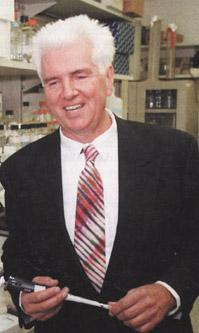Nobel Prize 1999
Nobel Prize in Chemistry: Ability to observe chemical reactions

Chemical reactions occur in a few femtoseconds period. Each femtosecond is 1,000 billion a second. This means that in a single second chemical reactions can be carried out in bile. It is therefore very difficult to know what is happening in these fast processes. Once the initial molecules, which can be unique, receive the energy needed to react and are relatively close to each other, their atoms undergo modifications to form the final products. Knowing the steps of this process can clarify the parameters that influence the reaction. Reactions, in most cases, can follow more than one path, but among chemists there is no doubt that they will run along the pathways that require less energy.
In each case, quantum chemistry can calculate the pathway. However, these methods have provoked great controversy among laboratory personnel. On the one hand, because the calculated systems cannot be very large, they must depend on the computing capacity of the computers used. On the other hand, the absence of a general theoretical method that serves all kinds of reactions. Therefore, the option offered by Theoretical Chemistry has not been accepted many times, there are many people in favor and vice versa and few are the chemicals that dare to unify theory and experiment. Despite considerable skepticism, Theoretical Chemistry has achieved great successes, such as predicting reactivity and substance properties.
The method used by the Zewail team allows you to "see" or at least guess the intermediate structures that form in the reaction. This is a type of laser spectroscopy or, which is the same, a method of analysis of these intermediate reaction structures. It is significant that the Nobel Prizes of the last two years are related to the same field of chemistry. The 1998 prize went to Pople and Kohn, who have done the necessary work for the development of Theoretical Chemistry. This year's award will be presented to Zewail, developer of the "femtokimika".
Nobel Prize in Physics: Mathematics of the internal forces of the atom

The work physicists have taken to relate the forces in nature has not been slow. Little by little the objective is being achieved, but theoretical physicists are discussing whether there is a general theory that unifies all. You will have to wait a long time until they become clear. In nature there is gravitational force, electric force, magnetic force, weak nuclear force and strong nuclear force. Scottish physicist James Clerk Maxwell (1831-1879) took a great step in unifying the electrical force with the magnetic force by writing the general formulas of the electromagnetic forces. The problem is that some forces act at great distances and others at very small distances. For example, the force of gravity controls the movement of astronomical bodies and nuclear bodies are perceived at the level of subatomic particles.
Among the "short-range" forces are electromagnetism and the weak nuclear force, which has related the theories of 't Hooft and Veltman. For these two forces they have developed mathematical formulas of "gauge symmetry". From the current point of view, Maxwell's is a "gauge theory." Taking advantage of this, he was able to predict the character of unknown radio waves. The theory of 't Hooft and Veltman also announce the existence of new particles, such as the Higgs particle. Now it is the turn of experimental physicists to detect this particle.
The two Nobel laureate physicists recognize that their work does not have such a practical application. But within science it is important to work the theoretical field, as has often been shown. It is clear that the Nobel Prize brings the recognition of the scientific community.
Nobel Prize in Medicine or Physiology: The secrets of protein transport
Within a cell there are thousands of proteins. Amino acids are interconnected macromolecules. Its main function is to produce chemical reactions of metabolism. The protein is accurate for a precise reaction, so it should be placed in the right place. Twenty types of amino acids are used in the human body to form proteins. By changing the sequence of these amino acids different proteins are obtained. DNA molecules keep all sequences coded.

Proteins are in continuous formation and intracellular degradation. From free amino acids, construction occurs in organelles called ribosomes. In order to reach the right places they must sometimes cross the membranes to leave the cell or reach other intracellular compartments. The transport must be controlled, that is, the protein must be active only in a specific place.
Blobel discovers that this direction appears encoded in the protein structure. As if it were an inseparable part of the protein, the direction signal is also encoded in the DNA. In addition, Blobel's "direction signal" hypothesis is widespread, as it appears in the same way in yeast cells as in vegetables and animals.
This knowledge expands the possibilities of application. Especially, when the map of the human genome is completed, you will know where each protein should go. It can involve understanding many of the processes that occur in diseases and new therapeutic strategies can be invented. In addition, many of the medications used are proteins. Therefore, by properly modifying the DNA molecule, these drugs would occur in the cells of the body.





